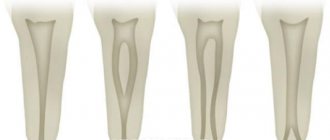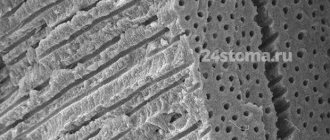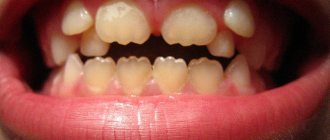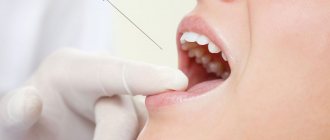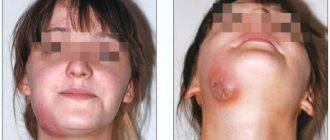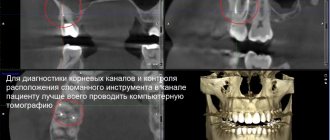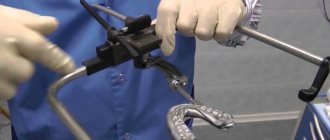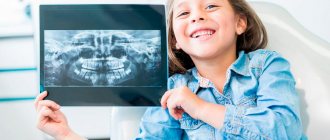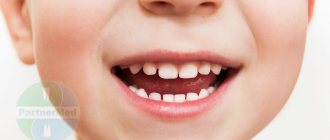Rozhkov I.A. Dental units “ANTOS” - a new model range of the “A” series are already in Russia!
Problems of “Clinical Gnathology”
Gnathology is the science of the interaction of all organs of the dentofacial system, including anatomy, physiology, and pathophysiology of this system, involving a comprehensive study, diagnosis and planning of treatment measures.
"Clinical Gnathology" implies an emphasis on the practical use of this science.
Over the past 20 years, there has been a technological breakthrough in domestic dentistry: new materials have appeared, and modern, high-quality, aesthetically pleasing dentures have begun to be used. Why is the number of patient complaints about dental care increasing and currently, according to forensic data, is one of the first places among complaints brought against doctors of various specialties?
We believe that one of the reasons for this situation is insufficient attention to the problems of Gnathology.
Based on clinical observations, back in the 80s we described numerous dental and neurological symptoms that arise as a result of diagnostic and treatment errors. The first works were published on the problems of “Clinical Gnathology”, on electromyography of masticatory muscles in normal and pathological conditions, on phonography and tomography (and later computed tomography) of the temporomandibular joint. Our use of intra- and extraoral recording of movements of the lower jaw improved the diagnosis of functional disorders and made it possible to imagine their pathogenesis.
For the diagnosis and design of dentures, we first mastered and used articulators in practice (1982-1983).
Unfortunately, in those years, new developments had difficulty making their way into practice. This was also facilitated by the fact that there was no Gnathology in dental training programs at universities. Textbooks still contain long-outdated materials on “Biomechanics of the masticatory apparatus.” There is no special textbook on “Clinical Gnathology”.
The domestic industry does not produce instruments and devices for studying the function of the dentofacial system or simulating the movements of the lower jaw.
In Europe and throughout the world, much attention is paid to the development of Gnathology. Dental companies produce numerous devices and articulators. All countries have books and teaching aids on this topic. Many educational institutions abroad have programs in Gnathology, designed for several years of study. They are implemented throughout the entire learning process or in special courses and departments.
Advanced courses in Gnathology are available in many European Universities. The best of them are considered to be the courses taught by professors A.Gutowski (Germany) and R.SIavicek (Austria).
At international exhibitions (Cologne) a variety of pantographs (mechanical and electronic), articulators of all types and for various purposes are constantly demonstrated.
Knowledge of “Clinical Gnathology” is necessary for a dentist of any profile:
— to assess occlusion in normal and pathological conditions;
— for the diagnosis and treatment of muscular-articular dysfunction, diseases of the temporomandibular joint, facial pain;
— to create stable central occlusion for all types of occlusal correction (orthopedic, orthodontic, orthognathic surgery);
— for planning functional occlusion in the manufacture of orthopedic structures;
— to assess the effect of occlusal trauma on the periodontium;
— for repositioning jaw fragments in accordance with correct occlusion;
— to determine the location and direction of the implant;
— when choosing a treatment method and determining a plan for medical interventions;
- to evaluate records of movements of the lower jaw and compare these records with other indicators of the functional analysis of the dentofacial system.
Several years ago, on the initiative of StAR, an educational and advisory and “Professor's Author's” clinic was organized, where we compiled a program for advanced training of doctors and dental technicians in “Clinical Gnathology” (headed by V.D. Wagner).
Classes at the organized training center aroused great interest among dentists. Doctors from many private clinics and offices, university teachers repeatedly attend these classes and use the acquired knowledge in practice.
We associate the further development of “Clinical Gnathology” with publications in the corresponding section of the “Maestro” magazine, as well as with the planned organization of the “Clinical Gnathology” section under the auspices of StAR. It is necessary to create “Clinical Gnathology” departments in universities and advanced training faculties for doctors.
An important matter is the introduction into the curriculum of dental departments and schools of the basics of “Clinical Gnathology”, a section on the peculiarities of working with articulators, on new methods of modeling the occlusal surface, setting teeth, etc.
In Russia and the CIS countries there are only a few specialists on this problem, and they interpret the same concepts and treatment methods differently, sometimes they do not have basic knowledge of Gnathology, patients receive conflicting advisory opinions, which is often the source of iatrogenic diseases.
Standards are required for “Clinical Gnathology” as a general dental discipline (such disciplines include, for example, anesthesiology, dental neurology, medical psychology, etc.). This means that a specialist dealing with the problems of “Clinical Gnathology” must have:
— dental unit, office;
— necessary equipment (face bows, articulator, pantograph, funciograph, etc.), materials (gypsum No. 3,4, special wax, molds for casting models), etc.;
— experience working with patients with occlusion disorders, temporomandibular joint disorders, bruxism, facial pain;
— document confirming completion of courses in Clinical Gnathology.
It is also advisable to create courses on “Clinical Gnathology”, for example, at the departments of general dental practice, where classes could be conducted with students, as well as train teachers in this discipline (personnel for personnel).
I urge the public to take part in creating a scenario for the formation of “Clinical Gnathology” as a general dental discipline.
Best regards, Prof. V.A. Khvatova
When to contact a gnathologist
If a patient has been treated by a dentist, but the pain in the teeth or jaw does not go away, it can be difficult to explain.
Any unaccounted for bump on a tooth or a prosthesis extending a few millimeters from the jaw can disrupt the normal movement of the jaw joint and lead to various unpleasant consequences.
Incorrect treatment can lead to various disturbances in the patient’s well-being:
- discomfort in the oral cavity;
- incomplete closure of the dentition;
- impaired jaw position;
- the appearance of dental anomalies.
You should not hope that all of the above violations will go away on their own. Quite the opposite: without finding out the cause and proper treatment, these symptoms will worsen and lead to chronic jaw pain or the risk of losing teeth.
By the way, there are symptoms that require early contact not just with a dentist, but with a gnathologist. Such symptoms can be expressed as:
- persistent muscle pain in the jaw, face, back of the head, neck or shoulder area;
- persistent headaches without an identified cause (usually in one half of the head);
- discomfort when closing teeth after treatment;
- regular tinnitus or tinnitus;
- clicking or crunching in the area of the jaw joints or ears;
- jamming of the jaw in a certain position when opening or closing the mouth;
- teeth grinding (bruxism).
Gnathology allows you to get a complete picture of the structure of the dental system of any person and find out everything about its features. This allows the specialist to understand the causes of any dental pathologies and guarantee successful treatment results.
However, there is no need to visit a gnathologist as regularly as a dentist. If the patient does not have any complaints, it is still important for him to get advice from this specialist before such important measures as prosthetics or installation of braces, so that the effect of treatment is maximum.
Prices
It is impossible to calculate in advance the cost of a gnathologist’s work. It all depends on the pathology that he reveals during the examination. The approximate cost of treatment by a gnathologist, associated with the restoration of normal functioning of the dental system, ranges from 10,000 rubles. It will cost more for a specialist to treat TMJ dysfunction, which is important for effective and competent prosthetics.
A specialist gnathologist is able to improve the results of any type of orthodontic treatment. This is possible by obtaining a complete picture of the patient’s teeth and jaws, which is important for giving the dentures maximum anatomical and functional identity of the “native” teeth.
Sources used:
- “Removable dentures: a textbook” (Mironova M.L.)
- International Academy of Gnathology
- “Orthopedic dentistry. Textbook" (Abolmasov N.G.)
Effect on jaw bones
The jaw bones, like all bone structures of the body, consist of a spongy and compact substance.
The bone beams of the jaws have a direction determined by their function. When the direction of load on individual teeth changes, the direction of the bone beams also changes. And with chewing load, buttresses are formed in the jaw - functionally oriented foci of compacted tissue.
The buttresses of the jaws transmit chewing pressure to the buttresses of the skull.
When the load is unbalanced, elastic deformation of the mandibular bone begins - on the side where the closure is complete and the jaw receives full load, the jaw bone bends to the bottom, and on the opposite side - to the top.
What therapeutic measures does a gnathologist use?
In order to correct various dental disorders, a gnathologist can use methods related to:
- Carrying out functional diagnostic methods (radiography, axiography, photo recording), which allows us to determine the nuances of the individual structure of the entire articular apparatus of the jaws and build a treatment plan.
- The modeling stage, at which the future bite is designed, taking into account the location of each individual tooth and the entire jaw as a whole. In this case, orthodontic treatment with SAP technologies can be used (dental restoration using the most precise methods of 3D technologies).
- Prosthetics using functional modeling methods.
- Treatment using stabilizer splints to eliminate discomfort and restore the correct position of the jaw.
Thanks to a gnathologist, you can solve many health problems related to:
- restoration of the proper functioning of the articular apparatus of the upper and lower jaw;
- relief from pain in the jaw, face, head or neck of unknown origin;
- correction of bite pathologies or consequences of injuries to the maxillofacial area;
- improvement of general well-being due to the restoration of hearing and vision in case of neurological problems after incorrect dental treatment.
Another way a gnathologist can correct improper muscle function is myogymnastics. This program includes exercises to stimulate the formation of a correct bite, its correction and to prevent complications after orthodontic treatment. Therapeutic exercises are selected individually for each patient by the specialist himself.
About diagnostic difficulties in the work of a gnathologist
A gnathologist must understand a variety of health problems, since 85% of malocclusions are associated with pathologies in the body that are not related to dental problems. Such pathologies may include disorders associated with:
- violations of various sizes of the jaw apparatus or deviations in the location of the jaws relative to the base of the skull;
- pathologies of the mandibular joints or masticatory muscles;
- problems with the spine;
- pathological changes in the neck and shoulder muscles (which are very difficult to identify).
The course of such pathologies is especially aggravated by the presence of disorders in the patient associated with osteopathic, hormonal, neurological and psychological disorders.
Many patients do not realize that diseases of the TMJ (temporomandibular joints) and masticatory muscles can occur due to disorders in the skeletal muscles, spine or large joints of the body. Especially often, such disorders can occur with combined pathologies of the cervical spine and associated disorders in the TMJ, in the muscles (facial, chewing, trapezius) or in disturbed alignment of the dentition.
If such points are not taken into account, orthodontic treatment will be unsatisfactory. Thus, straightening teeth can lead to complications such as:
- loosening or dislocation of teeth;
- pain when chewing;
- increased tooth sensitivity;
- dysfunction of the jaw joints;
- exposure of tooth roots;
- lack of chewing (occlusal) contact of the upper and lower teeth.
Therefore, for the effective installation of dentures or braces, a mandatory interdisciplinary approach must be taken into account, which is mastered by gnathologists.
